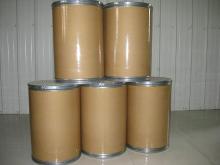Difference between revisions of "Menthol"
| Line 1: | Line 1: | ||
{{Infobox_Miscellaneous | {{Infobox_Miscellaneous | ||
| − | | image = | + | | image = Menthol.jpg |
| origin = - | | origin = - | ||
| stowage factor = - | | stowage factor = - | ||
Revision as of 09:33, 7 May 2012
| Infobox on Menthol | |
|---|---|
| Example of Menthol |  |
| Facts | |
| Origin | - |
| Stowage factor (in m3/t) | - |
| Humidity / moisture | - |
| Ventilation | - |
| Risk factors | - |
Menthol
Contents
Description
Usually shipped as white crystals in tins inside cases. Used in the perfumery trade and as a flavouring agent.
Menthol is slightly soluble in water and melts between 41°C and 43°C.
As this commodity is extremely volatile, the packing must be airtight. Should be preserved at a temperature not above 30°C. When the temperature rises, menthol will vaporize, escape from the container and a part will condense on the outside in the form of a thin sheet of menthol (sublimation). The escape of vapour may give rise to a loss in weight. When volatilised it cakes and may depreciate in value.
When stored at tropical temperatures will clog together. The process is one of ‘sintering’, whereby the crystals, at temperatures approaching the melting point, reform themselves into a more compact state, without any actual liquefaction. Menthol and related compounds are particularly prone to this. Due to the low melting point of menthol this effect will show itself even in temperate climates if the storage is prolonged.
Sound menthol may be tested by dropping an iron rod into the contents and when drawn up again the menthol should not stick to the rod. Weighing the container is the only way to ascertain the shortage due to sublimation of the menthol.
Full information on this product is in the process of completion.











